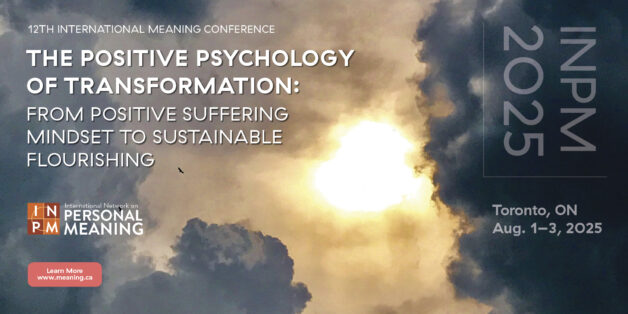On the fateful night of April 19, 1989, a young woman known as the Central Park Jogger was raped, beaten, and left to die. After a 14-year silence, she finally revealed her identity as Trisha Meili. She has appeared at Larry King Live and other talk shows. She also tells her story in her book entitled “I Am the Central Park Jogger: A Story of Hope and Possibilities.”
For Meili, after coming out of a coma, she lived through the horror of having to overcome her physical/emotional injuries and memory loss, and the struggles with many personal issues. The traumatic event drastically changed her life. Yet today, at 42, she is happily married and devotes her life to help others who have been traumatized. Her book is just part of such efforts.
What a comeback story! What a testimony to the amazing human capacity for resilience! What has contributed to her post-traumatic growth?
In this NHL playoff season, I can’t help but remember Wild Bill Hunter, who died at 82 in December 2002. Known as Mr. Hockey of Canada, he was founder of the Western Hockey League, the World Hockey League and was the original co-owner of Edmonton Oilers. His story can be found in the book by Bob Weber: “Wild Bill: Bill Hunter’s legendary 65 years in Canadian sport.”
Interestingly, he may be remembered not so much for his contributions to hockey, but for his passion for life in spite of his many personal tragedies. His wife died in a car accident; his youngest son committed suicide at age 21; he went through financial ruins and bitter disappointments; and for many years, he battled with various forms of cancer. Through it all, Wild Bill never felt sorry for himself and believed that he was the luckiest man on earth.
“Dale Carnegie once said all great happenings were the result of a dream, and I’ve always believed that absolutely,” Bill liked to tell others. Indeed, he had lived his dream fully, and got every ounce out of life right to the very end. His infectious optimistic spirit and his love for sports have left a mark on all those who know him.
What accounts for Wild Bill’s defiant human spirit? What contributes to his zest for life in spite of the many tragic events?
I can tell hundreds of real life stories of individuals who have overcome traumas. Some of them are household names, such as, Christopher Reeves and Rick Hanson. Some are unsung heroes. Yet, there is so much we can learn from them.
The positive psychology of growing through traumas is a much more fascinating topic for study than post-traumatic stress disorder (PTSD), because such knowledge can help increase individual resilience and reduce mental illness. I will briefly contrast post-traumatic stress disorder (PTSD) with post-traumatic growth (PTG) and then suggest several pathways to achieving the positive legacy of trauma.
What is Post-traumatic Stress Disorder?
Generally speaking, traumatic events are so unexpected and stressful that they overwhelm one’s capacity to cope. In many cases, these severe stressors rip people’s lives apart, shattered the foundation of their belief-meaning systems, and fundamentally change their future.
Trauma happens to us all, but in different ways. Sometimes, it strikes us with one devastating blow. At other times, it torments us slowly until we disintegrate and succumb to psychiatric illness. However, even ordinary events can have traumatic consequences. For example, getting fired or divorced can be traumatic for some people.
Vicarious trauma can occur simply by being exposed to horrible events like the September 11 terrorist attack. Soldiers can be traumatized by the carnage and destruction they have witnessed. It is worth noting that the prevalence rates of PTSD for Vietnam Veterans are quite high — 31% male and 27% female.
According to the Diagnostic and Statistical Manual of Mental Disorders (DSM-IV), PTSD consists of three core symptom clusters: re-experiencing (recurring thoughts or nightmares), avoidance (avoiding places, activities or people reminiscent of the event) and hyper-arousal (hyper-vigilance, irritability and exaggerated startle response).
PTSD tends to occur with other disorders, such as depression, anxiety, panic attack, substance addiction, and dissociative disorders.
What is Post-traumatic Growth?
Interesting, a percentage of people show positive changes as a result of trauma. Some of these individuals initially may show stress-related symptoms, but eventually recover and demonstrate personal growth. The recovery process may be slow as in the case of Trisha Meili.
Tedeschi and Calhoun (1995) were among the first to research and document PTG. Prior research has shown the following positive changes:
- Increased perception of competence and self-reliance
- Enhanced acceptance of one’s vulnerability and negative emotional experiences
- Improved relationships with significant others
- Increased compassion and empathy for others
- Greater efforts directed at improving relationships
- Increased appreciation of own existence
- Greater appreciation for life
- Positive changes in one’s priorities
- Stronger religious/spiritual beliefs
- Greater personal intimacy with God
- Greater sense of control and security through belief in God
- Greater meaning about life and suffering through religion
What are the characteristics of individuals who show psychological growth rather than psychiatric impairment? What are the psychological correlates? What factors contribute to PTG? These are some of the research questions.
Pathways to Post-traumatic Growth
Even in the best of times, achieving personal growth is not an easy task — it is like paddling a canoe upstream or climbing a steep, rocky mountain. However, after trauma the journey of growth becomes even tougher – it is more like paddling a leaky canoe upstream or climbing the mountain with broken legs.
The pathways to PTG begin with brokenness and deficits. Before growth can take place, one needs to CHOOSE to embark on the long journey of recovery – to restore shattered assumptions, regain confidence and find healing at physical, emotional, and spiritual levels.
The following pathways to PTG are based on both the research and clinical literature.
(1) Acceptance
You no longer live in denial or avoidance. And you no longer wallow in self-pity. You choose to confront your past trauma or current tormentor. You accept your own limitations and your misfortunes. More importantly, you accept that suffering is necessary for you to gain valuable knowledge and grow character. With acceptance, come a new sense of freedom and a more realistic assessment of your situation.
(2) Affirmation
You have accepted the fact your life circumstances could not have been worse. The world seems to be so dark and the future so bleak. Based on your painful experience, you have concluded that most people are selfish, and there is no justice. You have been wondering: What is the point? What is the use of fighting a losing battle? What is the meaning and purpose of suffering?
Yet, while hitting rock bottom and in the throes of struggling, your eyes are opened to new possibilities. Yes, there is goodness in life, and there is meaning and purpose in suffering. You choose to take a positive stance, because this is the only way out of the dark pit; the alternative to affirmation is self-destruction and death. You affirm meaning, because there is no future without believing that there is something worth living for.
By affirming life, you begin to appreciate all the little things you used to take for granted. You learn to delight in the natural beauty around you and the simple pleasures of life. Yes, it is exciting to be alive. It is worth the fighting for.
(3) Determination
Once you have chosen to embark on the road of recovery, you know that it will require perseverance and determination to make progress. Once you have started your quest for meaning and authenticity, you know that there will be obstacles, opposition, and even dangers. Yes, you are prepared to persist with courage and tenacity. Even if you may never arrive at the Promised Land, to be able to strive towards a worthy goal is sufficient to fill your heart with deep satisfaction.
(4) Confidence
You have been feeling helpless and powerless. You have been saying, “I can’t go on anymore. I am finished. There is nothing left in me. Life has run over me like a 5-ton truck and left me dying.”
But with affirmation and determination, your confidence gradually returns. With every small victory, your confidence grows. Now you say to yourself: “If I can survive this, I can survive anything. I know that the forces of evil are still there, and the obstacles are still there. The difficulties are formidable but not insurmountable. Yes, I CAN overcome with God’s help and support from others.”
Your confidence is no longer solely based on your own ability. Paradoxically, you have regained a sense of confidence and control through accepting your vulnerability and surrendering to someone much stronger than yourself.
(5) Religious faith
You have been wondering whether God listens to your prayers and whether He really cares. Like the Job of the Old Testament, you have complained bitterly about God’s indifference to your misfortunes. But now, the fog has lifted and you come to the realization that God is with you, crying with you and sharing your pain throughout your struggles. He does not shield you from suffering, but gives you the grace to endure and learn. You begin to hear God’s reassuring whisper and experience his tender embrace when you are feeling all alone and trembling with fear. Now you can rebuild your life on the solid rock of faith.
(6) Relationships
You used to be preoccupied with your own needs. You used to feel sorry for yourself. But now, your eyes are open to all those who suffer more than you do. You begin to seek out opportunities to help others. You discover that in helping other, you find healing for yourself.
Your priorities have changed. Now, your family and friends become more important than your personal achievements. Their support and care have nurtured you back to health. Now, you learn to appreciate and enjoy them in a way unknown to you before the traumatic event. You have grown in relationships as a result of the trauma.
(7) Optimism
At long last, you can hope again. Born of adversity and baptized by trauma, your hope will be able to endure anything that may come your way. You can now talk about your future with excitement, even though you know that danger may be lurking just around the corner. Your tragic sense of life is now married to a positive outlook in life, resulting in a mature tragic optimism.
Conclusion
I have provided a roadmap, which extends beyond the traditional psychological territory of self-efficacy and internal locus of control. I have shown pathways to growth that go beyond traditional modalities of treating PTSD.
Like tragic optimism, PTG is yet another example of the kind of mature positive psychology that resonates with all individuals who are going through suffering, pain and despair.


 Meaning Conference 2025 will be the INPM’s first in-person conference with a virtual option after the pandemic.
Meaning Conference 2025 will be the INPM’s first in-person conference with a virtual option after the pandemic.